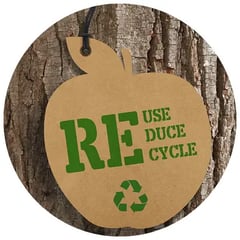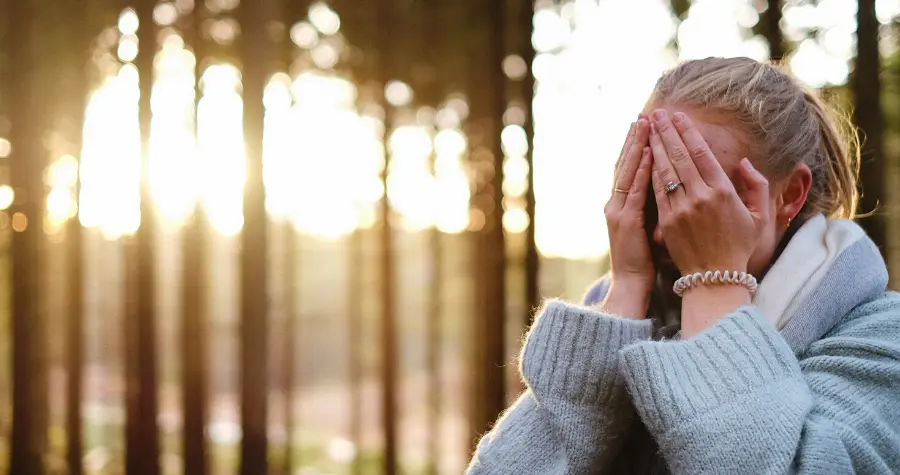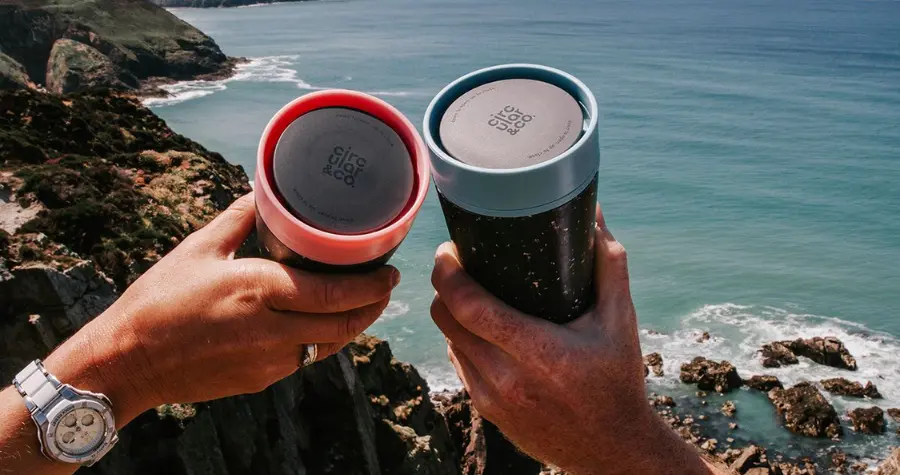What is circular design?
%20(1)-1.webp)
Put simply, circular design is the future of everything.
Which is good, because our linear economy model of take, make, and waste, is outdated. As a society, we cannot keep creating so much unusable waste. The solution? Circular economy.
What is circular design?
Circular design is about creating a product whose materials can be reused or 100% recycled. The item’s lifecycle no longer has a beginning, middle, and end - there’s just one, continuous, circular concept. It’s about being restorative and regenerative.
To give you some perspective, in 1970, we took 22 billion tonnes of natural resources from our planet. In 2010, this increased to 70 billion tonnes. The prediction for 2050 is 180 billion tonnes. Our world just can’t keep up with our increasing demand, so we’ve got to do everything we can to find, and support, alternative solutions..webp?width=240&height=240&name=2023%20blog%20pictures%20(1).webp)
Why is circular design good for the planet?
1) Circular design reduces waste
Our current linear structure of production of take, make, and waste isn’t sustainable anymore. Our planet simply does not have the space or resources to keep producing items that’ll end up in landfills. A circular economy would eradicate (or at least drastically reduce) the amount of waste we create, giving the planet a chance to recover. It’s not just about ‘single-use’ products anymore, we also need to be wary of ‘single-life’.
2) We’re learning from nature
Nature is naturally circular. It has to be. With a circular economy, we’re using what nature has learned over ‘3.8 billion years of research and development’ to our benefit, and the planet’s, too. A great example of this is packaging made from ‘mushroom plastic’. -1.webp?width=240&height=240&name=3%20(2)-1.webp)
3) We can prioritise local resources
A key element of circular design is critically thinking about the pros and cons of all resources and materials that go into the production process.
It’s about redefining what ‘waste’ is.
Circular design champions sourcing materials and resources that are close to home, and that have the most minuscule environmental impact possible.
4) Circular design reduces energy consumption
Making products from scratch uses far more energy than when we reuse and recycle them, so if we opt to support a circular economy, we’ll be reducing our energy consumption as goods are reused and repurposed.
For example, Renault’s remanufacturing scheme, where cars are taken apart and the parts repackaged to be sold again, has saved 80% of energy compared to if the parts were made new.
By thinking about the circular capabilities of a product, we’ll reduce our dependency on fossil fuels.
Circular brands
1) Circular & Co.
We love Circular & Co., and with us being a B Corp (read more about this), we love to support anyone who puts the planet before profits. We believe that Circular & Co., and companies like them, are the future of merchandise - a future we’re very excited about! 
2) Patagonia’s Worn & Wear
With 85% of clothing ending up in landfills, Patagonia wants to do everything they can to stop this fast-fashion epidemic we currently find ourselves in.
Their Worn & Wear programme is all about celebrating 2nd-hand clothing, where pieces can be repaired, traded in, or shoppers can purchase preloved items.
It’s time to bring your favourite Patagonia piece back to life!
3) Ecovative Design
A solution to our biggest ecological threat: plastic pollution. Ecovative Design uses their innovative mycelium technology (derived from mushrooms) to remove the need for harmful plastic. They are biodegradable by design, and a waste-free alternative.
4) Solubag
Another ingenious solution to our plastic waste problem. Solubag are creating biodegradable bags that’ll hopefully replace plastic bags in the near future!
Why we love circular design
It aligns with our brand values
Our mission is to deliver exceptional customer experiences that are driven by innovation, education, relevance, and quality.
We’re here to help you dream big. To do more, and to be more, just like circular design. -1.webp?width=240&height=240&name=4%20(2)-1.webp)
Whether that’s through solving problems, giving gifts, or building connections, it’s always been more than just merchandise to us, and it’s time to give back. Back to your friends, your family, your planet, your home, and that’s why we love circular design as it encapsulates this, and more!
It’s a step in the right direction
We want our merchandise to be more than just ‘giveaways’, which is the whole ethos around circular design.
We want promotional merchandise to be the best it can be, for your brand and the planet.
That’s why we’re one of the first UK B Corp-certified merchandise companies. This means we meet the highest standards of social and environmental performance, public transparency, and legal accountability to balance profit and purpose.
In more simple terms, it means using business as a force for good, thinking beyond profit to make a positive difference to people and the planet.
Our goal is to be Net 0 by 2030
In July 2020, we announced our commitment to becoming carbon net zero by 2030, alongside over 700 other certified B Corporations. Our commitment is 20 years ahead of the 2050 targets set in the Paris Climate accords.
We feel that as a business, this is one of the biggest and first steps we can take towards a more circular business model. Discover more about our journey to becoming Net 0 by 2030.
It’s time to take small *mighty* steps toward a circular lifestyle
1) Rethink your purchases
Next time you buy something new, think about how you’ll reuse it at the end of its life, or if you’ll repurpose it. The big question is: will you have to throw it out? If the answer is yes, then maybe don’t buy it. 
2) Restructure elements of your routine
It’s not about being perfect, it’s about being consistent. Restructure and rethink your routine to allow for the flexibility of being human, but also take the time to think about how you can improve your daily routine. We all make mistakes!
For example, use your washing-up liquid to water your plants, or use old clothing as cleaning cloths. No more fast fashion or takeaway coffee cups.
It’s about consciously making the effort to think about how an item can be reused and recycled.
3) Relearn what you knew about sustainability
Everything is always evolving and changing. Our knowledge and the definition of what it means to be sustainable are forever changing, too.
Keep up to date with the latest eco-news, and make sure you’re making conscious, sustainable, choices where possible. We’re not always perfect, but what’s important is that we’re on the right track.
The future is circular
What do you think about circular design? We love it! And we’re so excited to see where it leads in terms of our favourite promotional products.
For more information on circular design, check out our recent post - why we love Circular & Co. - or contact us today if you’d like to discuss the best possible eco-friendly merchandise for your brand.
We can’t wait to see you around!

